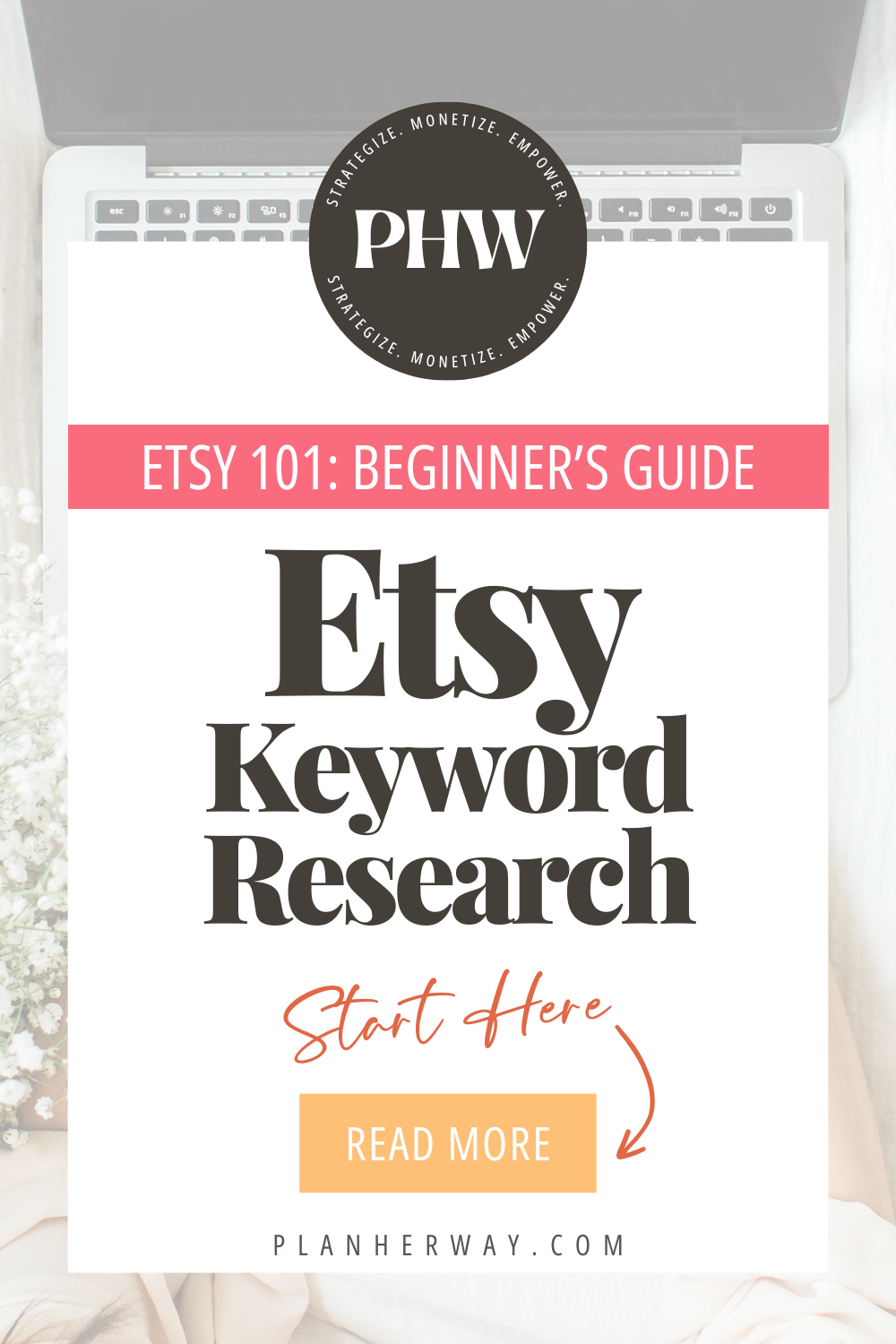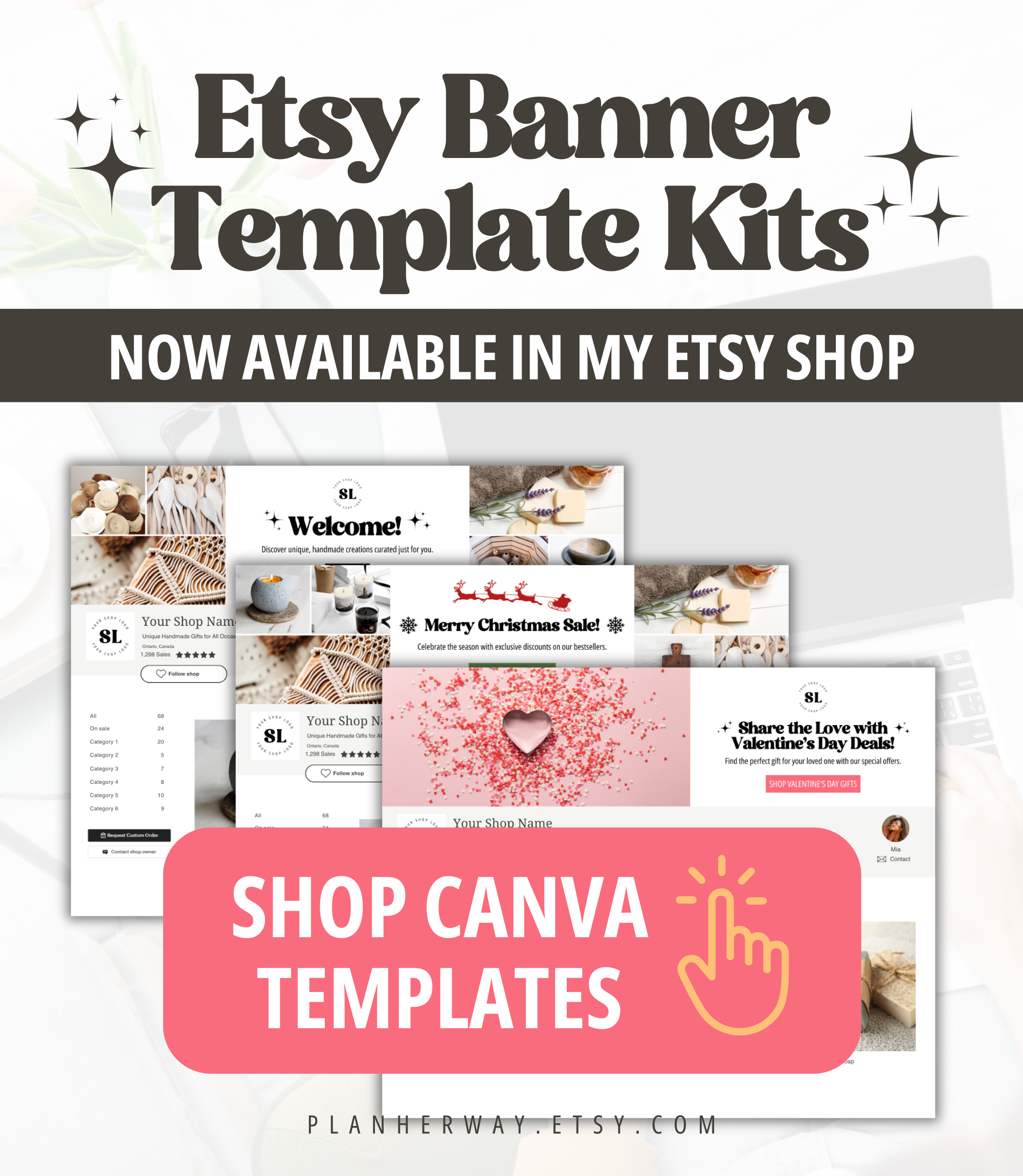Hey there, Etsy entrepreneurs!
If there’s one secret sauce to skyrocketing your shop’s visibility and driving more sales, it’s getting savvy with Etsy Keyword Research.
The right keywords can be your golden ticket to standing out in a sea of creative sellers.
RELATED:
- 70 Etsy Shop Announcement Examples That Spark Creativity
- Beginner’s Guide to Finding the Best Tags for Etsy
- How to Start an Etsy Shop for Beginners: Step by Step Guide

Introduction to Etsy SEO and Etsy Keywords
First things first, let’s talk about Etsy SEO (Search Engine Optimization).
Think of it as the compass that guides shoppers straight to your digital doorstep.
SEO on Etsy isn’t just about making your shop look pretty; it’s about making it findable.
And the breadcrumbs leading to you? Keywords.
Picking the most relevant and high-performing keywords for your listings can make all the difference between getting lost in the shuffle and being the belle of the ball.
Exploring Keywords for Etsy
Not all keywords are created equal.
They vary widely, from broad umbrella terms that cover a wide range of topics to niche-specific phrases that directly target keen buyers.
Let’s dive deeper:
- Broad Keywords: These are your foundational keywords that describe your product or service in the most general terms. For example, “shoes” or “coffee makers.” While they attract a broad audience, competition for these keywords can be intense due to their generic nature.
- Long-tail Keywords: These keywords are more detailed and specific, often containing three or more words. Shoppers using these phrases usually know exactly what they want. Examples include “women’s running shoes for flat feet” or “single-serve coffee makers with grinder.” They tend to have lower search volumes but can lead to higher conversion rates due to their specificity.
- Niche-specific Keywords: This category gets to the heart of targeted marketing. These keywords are highly specific and tailored to your unique products or services, often reflecting specialized features or attributes. For instance, “vegan leather women’s briefcase” or “organic fair-trade ground coffee.” Utilizing niche-specific keywords helps your product stand out in a saturated market, attracting customers who are looking for exactly what you offer.
By understanding and strategically implementing these different types of keywords, you can better position your products to be found by the right people at the right time, enhancing visibility and driving sales.
Conducting Effective Etsy Keyword Research
Conducting effective keyword research for your Etsy shop is like unlocking a treasure chest of potential customers.
It’s all about finding the right words and phrases that shoppers use when looking for products like yours.
Here’s how you can master the art of Etsy keyword research:
- Use Etsy’s Search Bar: Start with Etsy’s own search bar—type in a keyword related to your product and note the autocomplete suggestions. These suggestions are popular search terms that real shoppers are using, giving you direct insight into potential keywords.
- Leverage Etsy Rank and Other Tools: Tools like EtsyRank or Marmalead offer deep dives into keyword analytics, showing you search volume, competition levels, and even the best times to use certain keywords. Employing these tools can give you an edge by providing data-driven insights to guide your keyword strategy.
- Analyze Your Competitors: Look at shops that sell similar products and note which keywords they are targeting in their titles, tags, and product descriptions. This does not mean copying them verbatim, but understanding what works and how you can differentiate yourself.
- Consider Seasonality and Trends: Keywords can be seasonal or trend-based. Tools like Google Trends can help identify rising keywords and phrases. This knowledge allows you to adapt your listings to capitalize on current trends or seasonal demands.
- Focus on Keywords That Convert: It’s not just about traffic; it’s about attracting the right traffic. Monitor your shop’s analytics to see which keywords are bringing in visitors who convert into customers. Refine your strategy to emphasize these high-performing keywords.
- Iterate and Evolve: Keyword trends can change, and so can your products. Regularly revisiting your keyword strategy and making adjustments based on current performance analytics and market trends will keep your listings fresh and visible.
By diligently researching and applying strategic keywords, you can enhance your Etsy shop’s visibility, connect with more customers, and ultimately, increase your sales.
Remember, patience and persistence are key; fine-tuning the perfect set of keywords for your shop is an ongoing process, but well worth the effort for the success it brings.
Where to Use Etsy Keywords
Knowing where to effectively use your carefully selected Etsy keywords can significantly enhance your shop’s discoverability and attract the right audience.
Here’s a breakdown of the ideal places to incorporate your keywords for maximum impact:
- Titles: Your product titles are prime real estate for keywords. An ideal title succinctly describes your product with relevant keywords without stuffing. Think of the first few words especially, as they carry the most weight with Etsy’s search algorithm.
- Tags: Etsy allows you to use up to 13 tags per item. Utilize all available tags with keywords that potential customers might enter when searching for your products. This includes synonyms, localized terms, and related phrases that describe your item.
- Product Descriptions: The first few lines of your product descriptions are crucial. Along with keywords, they should tell a compelling story about the product to engage visitors. Embed keywords naturally throughout the description to maintain readability and boost search relevance.
- Shop Sections: Naming your shop sections with keywords can help with internal shop navigation and external search visibility. Treat section names as additional opportunities to rank for specific keywords related to those categories of products.
- Shop Title and Announcement: Your shop title and announcement section are excellent places to summarize what you sell using high-value keywords. This not only aids in search visibility but also quickly communicates your shop’s main offerings to visitors.
- About Section and Shop Story: Though not directly tied to Etsy search rankings, integrating keywords into your About section and Shop Story can contribute to your shop’s overall SEO on search engines like Google. Plus, it helps tell your brand’s story in a way that resonates with your target audience.
By strategically placing keywords in these crucial areas, you not only optimize your Etsy shop for search but also create a coherent and search-friendly profile that stands out to both Etsy’s algorithm and your ideal customers.
Remember, the goal is to integrate keywords naturally and meaningfully, enhancing your shop’s narrative and making it easier for the right customers to find you.
RELATED:
- 100 Power Words for Copywriting: Boost your Content
- 200 Unique Etsy Shop Names for Digital Products
- Best 50 Etsy Shop Ideas for Creative Entrepreneurs
Keyword Optimization: Do’s and Don’ts
When it comes to optimizing your Etsy shop with keywords, a thoughtful approach is essential to strike the right balance between visibility and readability.
Here’s a list of do’s and don’ts that will help you on your optimization journey.
Do’s:
- Research Your Keywords: Invest time in researching keywords that are relevant to your products and audience. Use Etsy’s search function, Google Keyword Planner, or other SEO tools to discover the terms and phrases your potential customers are using.
- Use Long-tail Keywords: Incorporate long-tail keywords—those specific, longer phrases that shoppers are likely to use when they’re closer to making a purchase decision. They might have lower search volumes, but they often lead to higher conversion rates.
- Update Regularly: Consumer trends and search engine algorithms change. Regularly revisiting your keyword strategy ensures your shop remains relevant and visible. It’s a good practice to refresh your keywords every few months or whenever you notice a dip in traffic.
- Be Contextual: Place your keywords where they make sense. Every keyword should feel like a natural part of the text, from product descriptions to your shop’s About section. This improves the customer’s experience and search engines’ ability to index your shop accurately.
Don’ts:
- Don’t Keyword Stuff: Resist the temptation to cram your content with keywords. Not only does this diminish the readability of your descriptions, but search engines might also penalize you for this practice, negatively impacting your shop’s search rankings.
- Avoid Irrelevant Keywords: While it might be tempting to use high-traffic keywords not directly related to your products, this can lead to poor user experience and increase your bounce rate. Ensure every keyword you use is relevant to your shop and offerings.
- Don’t Neglect the Mobile Experience: Many Etsy shoppers use mobile devices to browse and shop. Mobile users favour concise, to-the-point descriptions, so ensure your keyword-optimized content is also mobile-friendly.
- Don’t Ignore the Competition: While it’s important to focus on your shop, ignoring what your competitors are doing, especially those who rank well in your category, is a missed opportunity. Analyze their keyword strategy to identify what might also work for you, but always aim to differentiate rather than imitate.
Remember, keyword optimization is about making your shop easier to find for those looking for what you offer, leading to more meaningful engagement and conversion opportunities.

Hello! I’m Chantal from Atlantic Canada. With 15 years of experience in online marketing, I’ve built and sold three small online businesses. Now, I’m here to help solopreneurs create successful online businesses & Etsy shops, and generate passive income streams.

